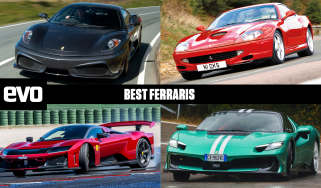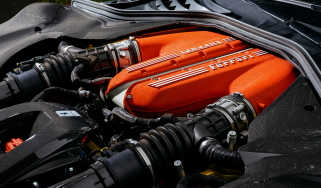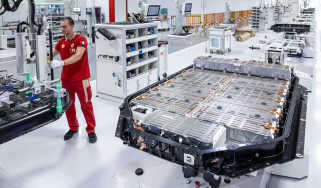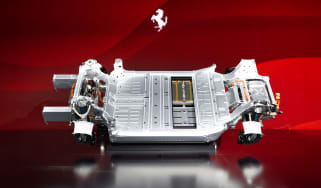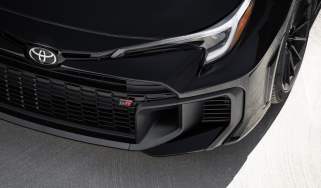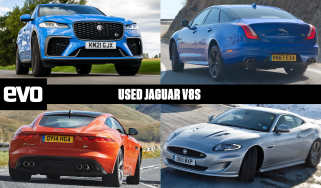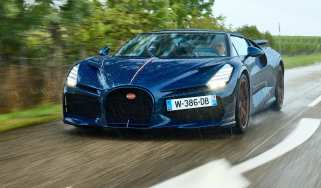Can Ferrari really sell a €407k supercar with a V6?
The new 296 Speciale has arrived, but is a V6 the right choice for what is meant to be Ferrari’s most thrilling road car yet? The team discusses this and more in episode 19 of the evo podcast
It was going to happen sooner or later. After polite questions about production volumes, naming strategies and Trump’s tariffs, someone was going to ask Ferrari marketing boss Enrico Galliera about the 296 Speciale’s V6 engine. How have customers responded? Would Ferrari make a u-turn and up the cylinder count in its future cars? ‘Sit in the car, drive it and then we comment,’ was his response. ‘Among our product range already the 296 is the car that is delivering the highest peak of emotion.’
He has a point. The standard 296 is a beautifully resolved and hugely exciting supercar, and the engine is a big part of that. It’s sharp, sweet sounding with outrageous levels of propulsion – it feels like you’re free-falling as you zap from one gear to the next. In a rounded, usable, junior (albeit £240k+) supercar it’s a great fit. But in something sharing a badge with one of our favourite driver’s cars of all time, the 458 Speciale, and tipped by bosses to be the most thrilling Ferrari road car ever? It could be a harder sell – especially at the €407k Ferrari is asking for the Speciale.
Galliera admits that downsizing to a V6 wasn’t a decision that Ferrari took lightly. ‘The question was, what are we going to do? We go out from the V12 and V8, which is the tradition? We questioned ourselves and then we came to the conclusion that it was the right choice technically, because we learned from our racing activities that the engine to achieve peak performance was the V6 combined with an electric engine.’
With modern F1 cars using hybrid, turbocharged V6s and Ferrari’s 499P winning Le Mans twice with a 296-derived engine, that’s a fair conclusion to draw. The V6 is compact, power-dense and its wide 120-degree V-angle gives it a low centre of gravity. But the question of noise and theatricality is an entirely different one. F1 cars don’t sound anywhere near as special as they used to, and nobody would rather listen to a 499P buzzing around a circuit than an 11,000rpm, V12 Aston Martin Valkyrie.
In episode 19 of the evo podcast, Dickie Meaden had this to say about the Speciale: ‘It’s probably got the most parallels with the race programmes of any Ferrari. But WEC’s not good for them – it is because they keep winning, but there’s the Cadillac that sounds amazing with a V8, the Valkyrie sounds amazing with a V12, and they’ve just got a V6.’
Ferrari has always drip fed motorsport engineering to its road cars – from the F50’s F1-derived V12 to paddleshift gearboxes and e-diffs – often with spectacular results. But when its race car powertrains are the least exciting they’ve ever been, why should its road cars follow suit? Free from competition and FIA regs, why not just make the most exciting engine possible? That’s what Lamborghini has done with the 10,000rpm V8 in the Temerario – on paper a much more enticing concept than the Speciale’s V6.
The key is ‘on paper,’ though, because Ferrari can’t be underestimated, and the Speciale has every chance of being utterly mesmerising. With the base car being so accomplished that would come as no surprise, and Ferrari has worked hard to give it the rabid, intense fury you’d expect of a special series model. The engine gets lighter internals, borrowed from the F80, plus a less restrictive exhaust and extra acoustic ducts to take the sound to ‘a whole new level.’ And of course the chassis has been sharpened up, the car lightened and the aerodynamics honed to a higher level.
Will the Speciale experience be worth €407k, living up to the stunning line of mid-engined road racers that came before it? We’ll need to sit in the car and drive it before commenting – and we can’t wait.
To hear more thoughts about the 296 Speciale from the evo team, listen to episode 19 of the evo podcast here


